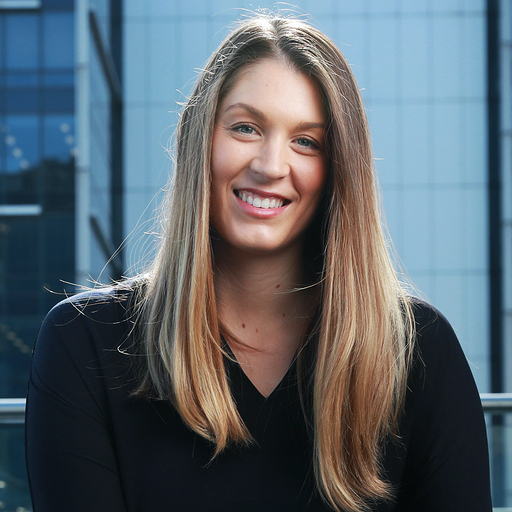Where property values have grown by $1m+ and how your suburb compares
House owners in some popular suburbs have hit the property jackpot with values soaring by more than $1 million in just 12 months.
For some, it’s the equivalent of more than $20,000 per week.
With a continuation of the pandemic-driven trend towards bigger homes in waterside locations, mansions in the nation’s most exclusive enclaves recorded the strongest price growth in dollar terms.
But with many priced out of the housing market, units also built up thousands of dollars a week in equity as buyers looked to get a foothold in popular beachside suburbs.
Use the interactive below to see how well your suburb has performed over the past 12 months.
Data from PropTrack has revealed the suburbs where property values have risen the most over the 12 months to January 2022.
PropTrack economist Angus Moore said 2021 saw the third fastest annual rate of house price growth in 140 years, accounting for inflation.
“We’ve seen over the past two years some of the fastest house price growth in history,” Mr Moore said.
While people used to put a lot of value on living close to the city or close to public transport, the ability to work from home has allowed many to reconsider their home base.
“If you’re commuting five days a week, an extra half an hour on your commute is a massive cost,” Mr Moore said.
“But if you’re working three days a week from home, maybe you can accept a longer commute on those other two days in exchange for living by the beach.
“And what that means is that we’ve seen beachside suburbs and houses outperform units in a city. And that’s really reflected in in what we’re seeing in the data.”
Here’s where prices have risen the most in each state
- New South Wales
- Victoria
- Queensland
- Western Australia
- South Australia
- Tasmania
- Australian Capital Territory
- Northern Territory
New South Wales
Sydney’s exclusive waterside suburbs dominated the top ten list, with eight suburbs recording annual price growth of more than $1 million.
PropTrack economist Angus Moore said the $1.5 million annual price growth recorded in Sydney’s Double Bay equated to more than 15 times the average annual full-time salary.
“Part of the reason is that it’s mechanical in that because these were really expensive suburbs to begin with, any increase becomes an astronomical amount,” Mr Moore said.
As of January, the median estimated value of a home in Double Bay was $5.8 million.
“The other factor that is driving a lot of what we’re seeing is people are really revaluating how much they value space and amenities, like being close to the beach or having an extra bedroom to work in during the day.
“Because of all those lifestyle factors the suburbs that have done really well tend to be the richer and older suburbs.”
Units in waterside Sydney suburbs also recorded strong price growth, with median values in Queenscliff, Northbridge and Warriewood up more than $400,000 in just 12 months.
Northern Beaches agent Michelle Galletti from Cunninghams said affordability constraints were a major factor.
“It’s just too hard to get into the house market,” Ms Galletti said.
“An entry level house in Freshwater, I’m not kidding you, is now $3 million.”
According to PropTrack, unit values in Freshwater grew by $217,000 over the past year to a median $1.13 million.
“People don’t need to commute anymore and that was the issue before, you know the commute to the city is a pain,” Ms Cunningham said.
Last year, the main buyer pool had been households from Sydney’s lower north shore who no longer needed to be close to the city for work, Ms Cunningham said.
But in recent months she noted there’s been a shift towards investors.
“This year it’s been a little bit different to last year, we’re finding that there’s a whole heap more investors, I reckon more than half of buyers.”
“I think the reason why they’re out and about is they’re refinancing against all their properties and trying to buy in before things change and interest rates go up.”
Victoria
While the top ten suburbs for house price growth were all located in New South Wales, the lure of coastal living also drove up prices in Melbourne’s Mornington Peninsular and Bayside regions.
Portsea, known for its clifftop mansions, recorded a $734,000 increase in the median house value over the 12 months to January, with a house now costing $3 million on average.
Sorrento and St Andrews Beach also made the state’s top ten list with price growth of more than half a million dollars.
Mr Moore said while further out, areas like the Mornington Peninsular still felt connected to the city.
“You get a little bit of Melbourne, you get a bit of space, the commute is worse, but if you work from home maybe that doesn’t matter to you,” he said.
Limited supply has also been a major driver of prices.
“There’s a big disparity in terms of where the available supply is and where people want to live, and so that’s been part of why we see those suburbs coming in so high on the list of fast growing areas.
Mr Moore said 6.1% of total property listings in Melbourne are in the Mornington Peninsula, while inner-Melbourne accounts for around 20% of listings.
For units, Balwyn North in Melbourne’s eastern suburbs topped the list with median price growth of $201,000, taking the average apartment value to $1.16 million.
But waterside locations also recorded strong price growth, with Sandringham, Beaumaris, Ocean Grove rounding out the top four.
Queensland
The sunny shores of Queensland’s southeast continued to draw in buyers, who are willing to pay a premium for the lifestyle it offers.
Houses and units along the Gold Coast and Sunshine Coast recorded the strongest price growth over the year to January.
Taking out the top spot was Mermaid Beach on Queensland’s Gold Coast, with a $679,000 jump in the median house value.
Local agent Emma Gregory from Amir Prestige said the suburb caters to a range of buyers.
“There is a vast selection of property types that cater to all buyers – apartments, duplexes and houses, both beachside and beachfront,” Ms Gregory said.
While the suburb’s median value is $2.2 million, waterfront homes can fetch many multiples of that, such as the recent sale of 65 Albatross Avenue, Mermaid Beach, which Ms Gregory said sold for $15.9 million.
As well as local buyers, interstate demand has also been a driver of property prices in Queensland, Mr Moore said.
“We’ve seen a big migration of people from Melbourne and Sydney in particular to Brisbane and Queensland more broadly, and that’s driven a lot of the demand for places in southeast Queensland,” he said.
“So we’ve seen that coming through in the price now. These haven’t increased as much as Sydney, but that’s just because they’re cheaper to begin with.
“And that’s actually another factor, if you’re able to work remotely as many people are now, why live in Sydney, when you can live in Brisbane and pay significantly less?”
The value of units in Noosa’s Sunshine Beach surged by $311,000 over the past year – the most across the state – taking the median value to $1.2 million.
Also on the Sunshine Coast, units in Peregian Beach, Twin Waters and Coolum Beach each recorded price growth of more than $200,000.
Western Australia
Waterside capital city suburbs continued to dominate in the west, however there was one clear frontrunner for annual price growth.
Dalkeith, known for its dazzling mansions with views of Perth’s Swan River, recorded a $627,000 increase in house values over the year to January, taking the median estimated value to $3.14 million.
Neighbouring Claremont and Cottesloe rounded out the top three.
The uplift in iron ore over 2021 also drove prices in the mining state’s Pilbara region, with the Port Hedland region a major beneficiary.
Units in Port Hedland surged by $114,000 in value over the year, taking the median price to $352,000. Units in South Hedland recorded growth of $87,000 to a median of $238,000.
Mr Moore said mining towns recorded volatile price swings in line with conditions and commodity prices.
“Those mining areas are often very volatile, both on the way up and the way down, because they are small and demand can swing very rapidly with activity in the mining sector,” he said.
South Australia
Unlike many of the larger and more populous states, residents in South Australia, Tasmania, the ACT and Northern Territory are still able to find a relatively affordable home on a large block within close proximity to the city.
As a result, the best performing suburbs of the past 12 months were located in well-heeled inner-city suburbs, offering leafy or scenic outlooks and larger homes.
In South Australia, St Peters recorded the largest price growth with houses surging $450,000 to a median $1.7 million.
Adelaide agent Henry Gower Tillett from Harris said interstate demand had surged during COVID.
“We’re seeing so much demand that has come from interstate and overseas buyers,” Mr Gower Tillett said.
“People are realising, I can live on a 700 square metre block in St Peters or North Adelaide, sell my 170 square metre block in Balmain in Sydney and stay on my same income.”
With tree-lined streets and large blocks, Mr Gower Tillett said inner-city suburbs offered a cosmopolitan lifestyle with easy access to scenic and lifestyle amenities.
“We do have a really good restaurant and coffee scene, a good wine scene. Obviously we’ve got the Barossa Valley, we’ve got McLaren Vale, both within 40 minutes of the city.
“Now that flights are back up and running, if you need to go to Sydney for one day a fortnight, or a day a month, well, of course you would do that to live in beautiful Adelaide.”
Beaumont, Unley, St Georges and Malvern rounded out the top five for houses, all recording price growth of more than $350,000.
Tasmania
The inner-city trend continued in Hobart, which Mr Moore said came down to relative affordability.
“You get way, way more space for your money. Even quite close to the city,” he said.
“Even though they are smaller cities, they are quite up and coming.”
South Hobart recorded the strongest annual house price growth, up $280,000 to a median $985,000.
Sandy Bay and New Town rounded out the top three for Hobart, with price growth of $265,000 and $247,000 respectively.
For units, Lenah Valley recorded the territory’s strongest price growth, with values up $151,000 in a year to a median $578,000.
Australian Capital Territory
In the nation’s capital, house prices rose the most in Coombs, up $628,000 to a median $1.2 million, followed by Red Hill ($532,000) and Yarralumla ($529,000). Moncrieff had the strongest price growth for units ($167,000).
“That preference that we see run across Australia for more space, it’s really helping markets like Canberra, Brisbane to some extent, regional areas, definitely Hobart and Adelaide,” Mr Moore said.
Mr Moore noted the higher proportion of public service workers in the ACT had also provided job security during the pandemic.
“The public service is much less cyclical,” he said, “industries like hospitality, tourism, education have been slammed. That’s not been the case for the public sector.”
Northern Territory
Bellamack in Darwin’s south east recorded the strongest annual price growth in the Northern Territory, with a $262,000 increase in median estimated house values to $580,000.
Closer to the CBD, Muirhead and Stuart Park each had price growth of more than $100,000.
Nightcliff made the territory’s top ten list for both houses and units, with units outpacing houses for annual price growth.
Over the year to January, houses in Nightcliff grew in value by an estimated $104,000 to $788,000, while units recorded price growth of $105,000 to a median $380,000.



